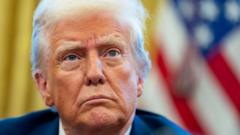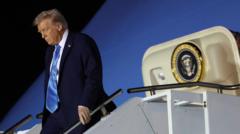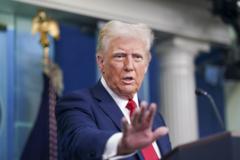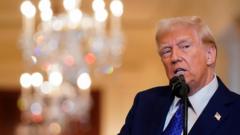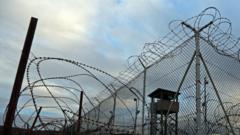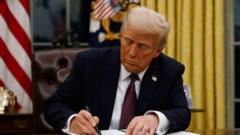As the anniversary of the January 6 Capitol riot approaches, Trump and his backers have strategically recast the insurrection, reframing it from a day of chaos into a celebration of "love," complicating the discourse around its implications and consequences.
Trump Recast of Jan. 6 Riot: A Day of Love or a Day of Infamy?

Trump Recast of Jan. 6 Riot: A Day of Love or a Day of Infamy?
Four years post-Capitol riot, Trump and supporters reshape narrative, framing a violent insurrection into a politically charged rallying cry.
On January 6, 2025, the shadows of history await reflection on the violent events that transpired at the Capitol four years previously. On that fateful day, a throng of rioters stormed the building, driven by a chain of misinformation perpetuated by then-President Donald Trump, who falsely claimed that the 2020 election had been stolen. The riot resulted in tragic consequences, with several lives lost, including a protester fatally shot and four police officers committing suicide post-incident. More than 140 officers sustained injuries that day, marking a somber chapter in U.S. history.
As we stand on the verge of the anniversary, the landscape has shifted. Trump’s imminent second term is poised to breathe new life into contentious narratives surrounding January 6. Over the years, both Trump and his staunch supporters have actively sought to reframe the day's events, weaving conspiracy theories into the political fabric as they downplay the significance of the rioters' actions. Those implicated in the riot have been recast from violent offenders into symbolic figures of patriotism.
This narrative twist has imbued Trump with an opportunity to assert new meaning to the past—a sentiment he has characterized as “a day of love.” In his upcoming administration, he has pledged to issue pardons to those convicted of participating in the insurrection within the first hour of taking office, while congressional allies are advocating for criminal charges against individuals who investigated the events surrounding that day.
Trump’s remarks paint a picture of America grappling with crises, highlighting a narrative of crime and chaos. However, data and analysis often tell a contrasting story, revealing a more nuanced reality behind the rhetoric. As the date approaches, the question remains—will the reality of January 6 and its aftermath be overshadowed by a newly painted optimistic narrative? The world watches as history repeats and reshapes itself in the remembrance of a divided moment.


